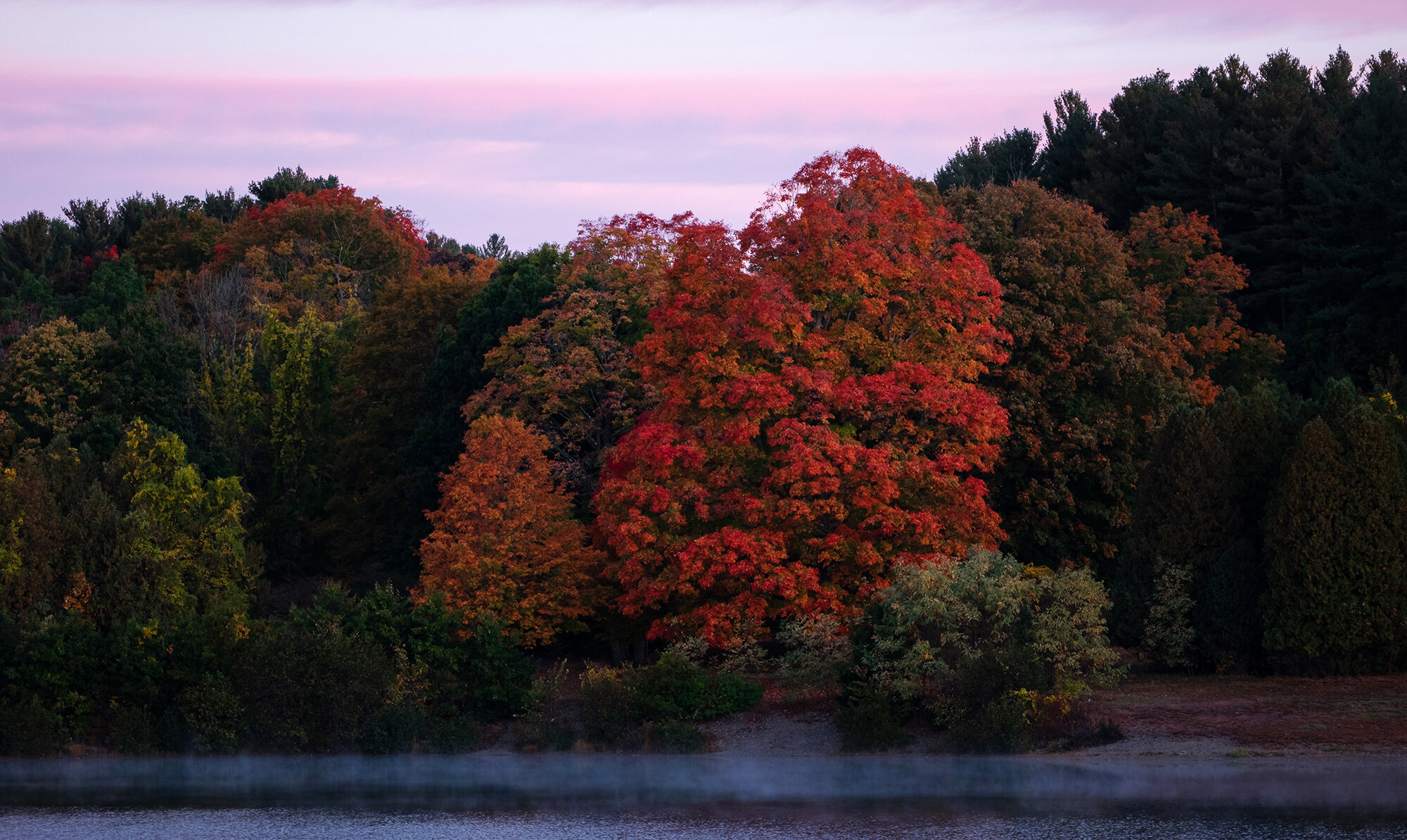Not long after I first laid eyes on the pine-studded island in the middle of the Breakheart Reservation’s Silver Lake, I knew that I would want to photograph it in multiple seasons, and that Breakheart would be one of our first must-repeat locations here in Massachusetts. Even back in August, when the sun was sharp and the trees were lush and green, the lake, rimmed by tall pines and encircled by a single-file dirt path along its shore, was a luminous place to photograph. The morning light cascading through the treetops, the diverse webbing of trails through the forest, and the pleasant proximity of woods and water made for some wonderfully ethereal images.
So it is that we wind up back in Saugus before sunrise on a Sunday morning. Taking a wrong turn out of the trailhead parking lot, we find ourselves detouring to the small beach at the north end of Pearce Lake, which winds up being a lovely subject in its own right. As Jane walks down the shore, I take a photo of her standing beside the lake, with mist rising into the morning air and shrouding the sinuous curves of the lake, which are just out of view. Back on the trail, we circle our way back to the western edge of Silver Lake, where I have an absolute blast bouncing between several compositions that I scouted in August - essentially the central island from various points on the shoreline. To my great delight, the single red maple on the island is aflame with autumn color, providing a nice splash of vibrance to these photographs.
Continuing counterclockwise along the lake, we branch off onto smaller paths that crisscross the forest. Jane leaves me for awhile as I photograph the woodland images below, which are prototypical New England fall scenery: mixed hardwoods and textured barks, colorful light-draped canopies, and foot-beaten paths through viburnum and berry brush. We enjoy another small-town breakfast at the nearby Iron Town Diner before heading home.












































